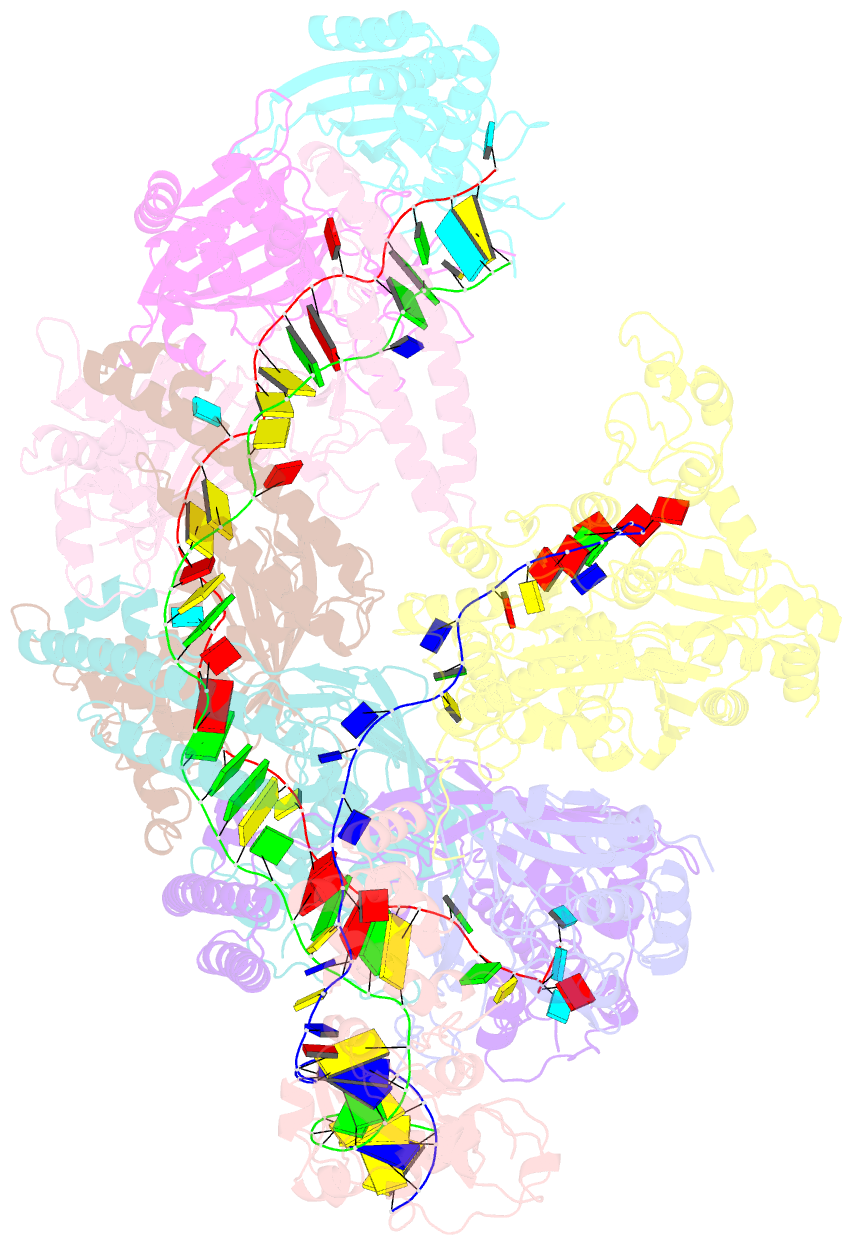Summary information and primary citation
- PDB-id
- 8s36; SNAP-derived features in text and JSON formats;
DNAproDB
- Class
- antiviral protein
- Method
- cryo-EM (2.9 Å)
- Summary
- DNA-bound type iv-a3 crispr effector in complex with ding helicase from k. pneumoniae (state ii)
- Reference
- Cepaite R, Klein N, Miksys A, Camara-Wilpert S, Ragozius V, Benz F, Skorupskaite A, Becker H, Zvejyte G, Steube N, Hochberg GKA, Randau L, Pinilla-Redondo R, Malinauskaite L, Pausch P (2024): "Structural variation of types IV-A1- and IV-A3-mediated CRISPR interference." Nat Commun, 15, 9306. doi: 10.1038/s41467-024-53778-1.
- Abstract
- CRISPR-Cas mediated DNA-interference typically relies on sequence-specific binding and nucleolytic degradation of foreign genetic material. Type IV-A CRISPR-Cas systems diverge from this general mechanism, using a nuclease-independent interference pathway to suppress gene expression for gene regulation and plasmid competition. To understand how the type IV-A system associated effector complex achieves this interference, we determine cryo-EM structures of two evolutionarily distinct type IV-A complexes (types IV-A1 and IV-A3) bound to cognate DNA-targets in the presence and absence of the type IV-A signature DinG effector helicase. The structures reveal how the effector complexes recognize the protospacer adjacent motif and target-strand DNA to form an R-loop structure. Additionally, we reveal differences between types IV-A1 and IV-A3 in DNA interactions and structural motifs that allow for in trans recruitment of DinG. Our study provides a detailed view of type IV-A mediated DNA-interference and presents a structural foundation for engineering type IV-A-based genome editing tools.





